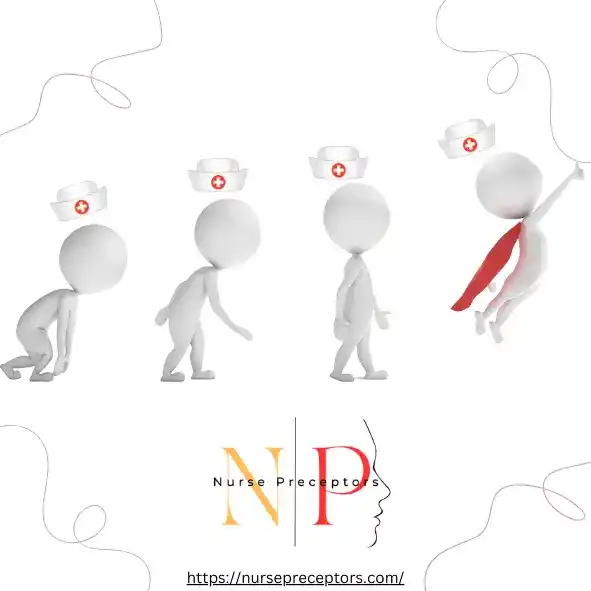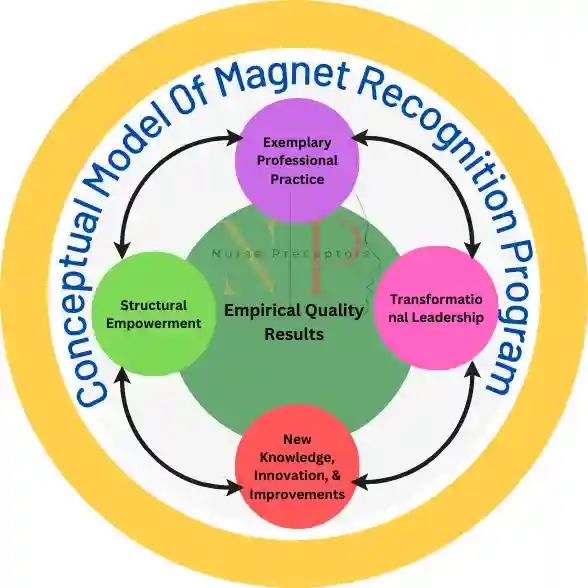Why is magnet status important?
The healthcare industry is constantly evolving, with organizations striving to provide the best possible care to patients. One program that has revolutionized the way healthcare organizations function is the ANCC Magnet Recognition Program created by the American Nurses Credentialing Center (ANCC).
So, what is the ANCC Magnet Recognition Program.? The ANCC Magnet Recognition Program is a prestigious designation that recognizes healthcare organizations for their commitment to nursing excellence, patient outcomes, and overall quality of care.
In today’s healthcare landscape, the role of nursing is more crucial than ever. Magnet nurses are not only responsible for providing quality care to patients but also play a significant role in driving innovation and improving patient outcomes.
The ANCC Magnet Recognition Program recognizes healthcare organizations for their commitment to providing excellent patient care, nursing excellence, and a positive work environment for nurses. This program signifies excellence in nursing practice and empowers Magnet nurses to lead and transform healthcare organizations.
In this article, we will explore the history, benefits, and key components of the Magnet Recognition Program, and why it is considered the gold standard for nursing excellence.
What is the Magnet Recognition Program?
The Magnet Recognition Program is an internationally recognized credential that distinguishes healthcare organizations for their nursing excellence. It was first established in 1990 by the ANCC, a subsidiary of the American Nurses Association.
The program is based on a set of rigorous standards and criteria that evaluate an organization’s ability to provide exceptional nursing care, create a positive work environment for Magnet Nurses, and achieve outstanding patient outcomes.
The Magnet Recognition Program is a voluntary program that recognizes healthcare organizations for their commitment to nursing excellence.
It was first established in 1994 by the ANCC to identify healthcare organizations that provide exceptional nursing care and create a supportive work environment for nurses.
The program is based on a set of rigorous standards and criteria that evaluate an organization’s nursing practice, leadership, and outcomes.
History and Evolution of the ANCC Magnet Recognition Program
The American Nurses Credentialing Center (ANCC) Magnet Recognition Program was developed to recognize healthcare organizations that provide nursing excellence.
The history of this program dates back to 1981 when the American Academy of Nursing conducted a study to identify the factors that attract and retain nurses in healthcare settings.
This study led to the development of the ANCC Magnet Recognition Program in 1990, which was aimed at recognizing hospitals that exhibited these characteristics.

Over the years, the ANCC Magnet Recognition Program has evolved significantly. Initially, the program was focused on attracting and retaining nurses, but it has since expanded to include other important aspects of healthcare, such as patient outcomes and satisfaction. This evolution reflects the increasing recognition of the integral role that nurses play in improving patient care and outcomes.
The program’s evolution has also seen changes in the criteria for magnet recognition. While the original focus was on creating a work environment that promotes professional nursing practice, contemporary magnet hospitals are expected to demonstrate a high level of patient care, nursing excellence, and innovations in professional nursing practice.
Further, they are also required to provide evidence of the outcomes achieved through nursing services.
The ANCC Magnet Recognition Program continues to evolve to meet the changing needs of healthcare organizations and patients. Today, it is considered a gold standard for nursing care and serves as a benchmark for other healthcare organizations aspiring to achieve a high level of nursing excellence.
The history and evolution of the ANCC Magnet Recognition Program underscore its importance in promoting high-quality care, boosting patient satisfaction, and improving patient outcomes in healthcare settings.
A. The Origins of Magnet Hospitals
The concept of Magnet hospitals originated in 1983 when the American Academy of Nursing (AAN) conducted a study to identify hospitals that excelled in attracting and retaining highly qualified nurses.
These hospitals, known as Magnet hospitals, shared common organizational features that contributed to their success in nursing recruitment and retention. The study found that these hospitals had strong nursing leadership, empowered nurses, and a collaborative work environment.
Inspired by this research, the American Nurses Association (ANA) established the Magnet Nursing Services Recognition Program through the ANCC to acknowledge excellence in nursing services and through this program ANCC disseminated that information throughout the world that what is the magnet recognition program?
In 1994 The University of Washington Medical Center, Seattle, WA was certified as the first ANCC Magnet Recognized Organization. In 1996 ANA revised the qualification and program criteria using The Scope and Standards for Nurse Administrators and the name of the program was changed to the Magnet Nursing Services Recognition.
In 1998 the Magnet program was expanded to long-term care institutions. In 2000 Magnet Program was extended outside the United States to organize healthcare organizations worldwide.
The official name of the Magnet program was changed to Magnet Recognition Program in 2002. In 2008 the commission introduced an advanced conceptual model including five key components which are comprised of 14 Forces of Magnetism.
B. The Evolution of the Magnet Recognition Program
Since its inception, the Magnet Recognition Program has evolved to encompass a broader scope and international recognition. Initially, the program focused on recognizing hospitals within the United States. However, due to growing demand and requests from healthcare organizations abroad, the ANCC expanded the program to recognize healthcare organizations worldwide.
This expansion allowed nursing excellence to be celebrated on a global scale and facilitated the dissemination of successful nursing practices and strategies.
What are the components of the Magnet Recognition Program?
The conceptual model of the Magnet Recognition Program is built on a framework known as the Forces of Magnetism, which consists of five components:

3. Exemplary Professional Practice
Exemplary professional practice encompasses the delivery of high-quality patient care based on evidence-based practice and professional models of care. It emphasizes interdisciplinary collaboration, consultation, resource utilization, autonomy in nursing practice, and the role of nurses as educators.
What are the requirements to achieve Magnet status?
To achieve Magnet Recognition, organizations must meet a set of rigorous criteria established by the ANCC. These criteria encompass various elements, including nursing leadership, staff education and development, professional development opportunities, empowerment of nurses, the quality of nursing care provided, patient outcomes, and nursing research. To achieve this esteemed status, there are specific requirements that organizations must meet:
In short, achieving ANCC Magnet Recognition requires an organization-wide commitment to excellence in nursing practice and patient care. Each requirement is designed to ensure that nurses are empowered, supported, and recognized for their vital role in healthcare delivery. To maintain this status, organizations are required to continually demonstrate these standards in their day-to-day operations.
What are the steps for magnet accreditation?
Becoming an ANCC (American Nurses Credentialing Center) Magnet-recognized organization is a prestigious designation that highlights a healthcare organization’s commitment to nursing excellence. The journey towards this recognition involves several critical steps.
5. Application process
The fifth step is preparing and applying the ANCC. The application process includes providing evidence of how your organization meets the Magnet standards. Once the application is accepted, a site visit will be scheduled for verification.
The Role of Magnet Nurses in Transforming Organizations
Magnet Nurses play a crucial role in transforming organizations. They are at the forefront of driving change and innovation in nursing practice. They are highly skilled and knowledgeable professionals who serve as role models for their peers and embody the principles of the Magnet Recognition Program. They are involved in decision-making processes and actively contribute to improving patient outcomes and the overall quality of care.

Magnet Nurses are leaders, advocates, and change agents who drive improvements in patient care and nursing practice. They also serve as mentors and educators, sharing their expertise with other nurses and inspiring them to achieve excellence in their practice.
They collaborate with interdisciplinary teams, promote evidence-based practice, and empower their colleagues to deliver exceptional care. Magnet Nurses are instrumental in creating a culture of excellence and continuous learning within healthcare organizations.
What are the benefits of Magnet recognition?
Organizations that achieve Magnet Recognition experience numerous benefits. Firstly, Magnet Recognition is a symbol of excellence and serves as a competitive edge, attracting top talent and patients seeking high-quality care. It also enhances an organization’s reputation and credibility within the healthcare community.
Furthermore, Magnet-recognized organizations have been shown to have better patient outcomes, lower mortality rates, fewer medical errors, and higher nurse satisfaction. The program also fosters a culture of innovation and continuous improvement, leading to advancements in nursing practice and patient care.
Hospitals that achieve Magnet designation enjoy numerous benefits that positively impact both nurses and patients. The Magnet Recognition Program means access to educational and developmental opportunities throughout the careers, leading to greater autonomy and professional growth for nurses.
Magnet hospitals foster a culture of innovation and collaboration, allowing nurses to actively contribute to improving patient care and outcomes.
Research has shown that Magnet hospitals have higher percentages of satisfied nurses, lower turnover rates, improved clinical outcomes, and increased patient satisfaction. Nurses in Magnet hospitals report lower burnout rates and higher levels of job satisfaction, which translates into better quality care for patients.
Magnet designation also attracts top nursing talent, as nurses seek employment in organizations known for their commitment to excellence in nursing practice.
Magnet Recognition is also a powerful recruitment tool as nurses are more likely to seek employment in Magnet-designated organizations, knowing that they provide an environment that supports their professional growth and development.
Support and Resources for Organizations Pursuing Magnet Recognition
The ANCC recognizes the challenges organizations face when pursuing Magnet Recognition and provides a range of valuable support and resources. They offer educational programs, webinars, and conferences to help organizations understand the requirements and navigate the application process to implement the Magnet standards.

The ANCC also provides consulting services and offers feedback to organizations to help them improve their nursing practice and achieve Magnet Recognition.
Additionally, organizations can collaborate with other Magnet-recognized institutions to learn from their experiences and best practices these professional organizations and networks are dedicated to supporting organizations on their Magnet journey, such as the American Nurses Association (ANA) and the Magnet Recognition Program® Appraisers.
Conclusion: The Transformative Power of the ANCC Magnet Recognition Program
The Magnet Recognition Program is a prestigious recognition that signifies excellence in nursing practice and empowers nurses to lead and transform healthcare organizations. The ANCC Magnet Recognition Program has transformed healthcare organizations by promoting nursing excellence, improving patient outcomes, and creating positive work environments.
It has revolutionized nursing practice and transformed healthcare organizations worldwide. Magnet designation is not just an award; it is a testament to an organization’s commitment to providing exceptional care and fostering a culture of nursing excellence.
It is a significant accomplishment that not only enhances an organization’s reputation but also leads to better patient care and nurse satisfaction.
Magnet hospitals enjoy numerous benefits, including higher nurse satisfaction, improved patient outcomes, and increased patient satisfaction.
By embracing the principles and components of the Magnet Recognition Program, healthcare organizations can elevate nursing practice and deliver the highest quality of care to their patients and make a lasting impact on the healthcare industry.
As healthcare organizations continue to pursue Magnet Recognition, the future of nursing looks promising, and patient care will continue to be elevated to new heights.
If you are a healthcare organization seeking to transform your organization and enhance patient care, consider pursuing Magnet Recognition. Visit the ANCC website for more information and start your journey toward nursing excellence today.
References:
- Enterprise, A. N. A., and American Nurses Association. “ANCC Magnet Recognition Program.” (2020).
- Magnet Recognition Program® | ANCC. (2017, October 14). ANA. https://www.nursingworld.org/organizational-programs/magnet/
- What is a Magnet Hospital? (2021, November 5). SNHU. https://www.snhu.edu/about-us/newsroom/health/what-is-a-magnet-hospital
- Aiken, Linda H., Donna S. Havens, and Douglas M. Sloane. “The Magnet nursing services recognition program: a comparison of two groups of Magnet hospitals.” The Journal of nursing administration 39.0 0 (2009): S5.
- Graystone, Rebecca. “The value of magnet® recognition.” JONA: The Journal of Nursing Administration 49.10S (2019): S1-S3.
- Clark, Martha L. “The Magnet Recognition Program and evidence-based practice.” Journal of PeriAnesthesia Nursing 21.3 (2006): 186-189.
- Haller, Karen, Wilma Berends, and Patti Skillin. “Organizational culture and nursing practice: the magnet recognition program® as a framework for positive change.” Revista Médica Clínica Las Condes 29.3 (2018): 328-335.
- Triolo, Pamela Klauer, Elaine M. Scherer, and Jeanne M. Floyd. “Evaluation of the magnet recognition program.” JONA: The Journal of Nursing Administration 36.1 (2006): 42-48.
We express our gratitude towards the various sources referred in this blog post for their valuable contributions and insights. Their expertise and dedication have significantly enriched the content, and we extend our sincere appreciation to each of them for their valuable contributions.